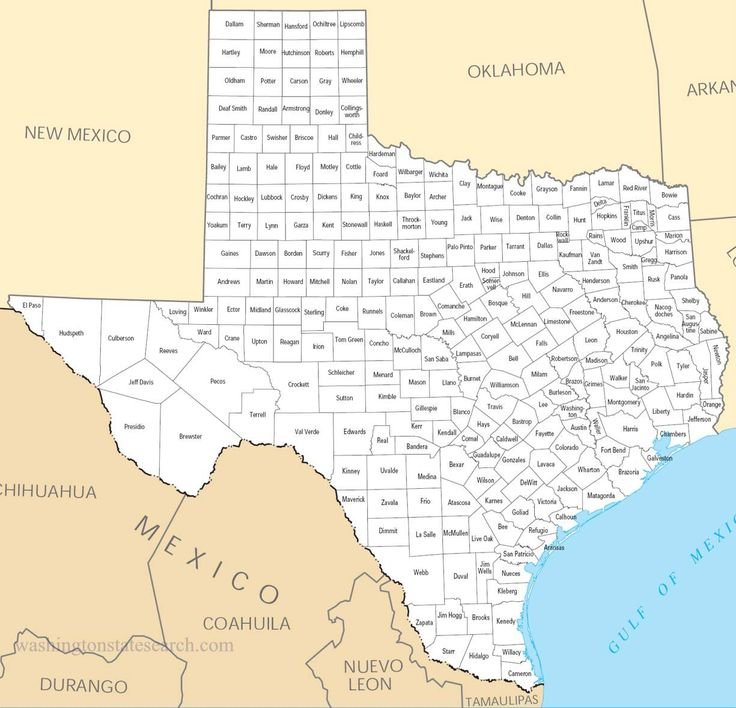
county map of texas
introduction to county map of texas
Exploring Texas is like stepping into a vibrant tapestry of culture, history, and landscapes. One of the best tools for understanding this vast and diverse state is the county map of Texas. With 254 counties, Texas boasts the largest number of counties in the United States. Each county has its own unique identity, blending historical significance with natural beauty and modern attractions. Whether you’re a history buff, a road trip enthusiast, or someone planning a move, understanding the county map of Texas can open up a world of possibilities.

Introduction: Why the County Map of Texas is Essential
The county map of Texas is more than just a visual tool; it’s a window into the soul of the Lone Star State. This map not only outlines the geographical boundaries of Texas’ 254 counties but also highlights their individual stories, economic strengths, and cultural heritage.
From bustling urban centers like Dallas County to serene, rural landscapes like Loving County, each area offers a unique experience. A county map serves multiple purposes, from aiding navigation to understanding local governance structures. Moreover, it allows residents and visitors alike to appreciate the diversity within the state.
Whether you’re a Texan proud of your roots or someone planning a visit, exploring this map brings you closer to the essence of Texas.
Overview of Texas Counties: How Texas Became the State with 254 Counties
Texas’ Unique History of County Formation
Texas wasn’t always as we know it today. When Texas gained independence from Mexico in 1836, it had only 23 municipalities. As the Republic of Texas expanded and later joined the United States in 1845, these municipalities evolved into counties. Over time, as settlers pushed westward and new territories were established, the number of counties grew to 254.
Why 254 Counties?
The large number of counties is deeply rooted in Texas’ sheer size. Unlike smaller states, Texas prioritized accessibility. In the 19th century, it was essential for residents to reach their county seat within a day’s horseback ride. This practical necessity led to the creation of smaller counties, especially in sparsely populated areas.
What Makes Texas Counties Unique?
Each Texas county has its own government, court system, and sheriff. This decentralized governance model empowers local communities, giving each county its own character. county map of texas
Understanding Texas Regions: Breaking Down Texas Into Major Geographic Regions
The Panhandle and Plains
The northernmost part of Texas, known as the Panhandle, is characterized by its flat plains and open skies. Counties like Lubbock and Amarillo dominate this region, known for cattle ranching and oil production.
Central Texas
Central Texas is home to iconic counties such as Travis County, where Austin, the state capital, is located. This region is a hub for tech startups, live music, and rolling hills.
East Texas
East Texas offers a lush, green landscape with counties like Tyler and Nacogdoches. Known as the Piney Woods region, it has a rich agricultural history and a slower pace of life. county map of texas
West Texas
Vast deserts and rugged terrain define West Texas counties such as El Paso and Pecos. The region is famous for Big Bend National Park and its breathtaking sunsets.
South Texas and the Gulf Coast
Counties like Harris (home to Houston) and Cameron (on the border) showcase Texas’ maritime economy and cultural fusion with Mexico.
History Behind Texas Counties: How Counties Were Established and Named
Origins of County Names
Many counties in Texas are named after notable figures from Texas history, such as Sam Houston or Stephen F. Austin. Others reflect the area’s cultural heritage, with names derived from Native American, Spanish, and Mexican influences.
County Evolution Over Time
As Texas expanded westward, counties were added to accommodate growing populations. The county boundaries often shifted as settlements and infrastructure developed.
The Role of Texas’ Indigenous and Spanish Roots
Before statehood, much of Texas was inhabited by Native American tribes. Spanish colonization added another layer of complexity, with Spanish missions and presidios leaving a lasting impact on county names and borders.
Largest and Smallest Counties in Texas: A Look at Geographic Extremes
Biggest County: Brewster County
Covering over 6,000 square miles, Brewster County is the largest in Texas. Located in West Texas, it’s home to Big Bend National Park and features stunning desert landscapes.
Smallest County: Rockwall County
With an area of just 149 square miles, Rockwall County near Dallas is the smallest. Despite its size, it boasts a thriving suburban community.
Why Size Matters
The size of a county often correlates with population density and resources. Larger counties like Brewster have low populations but vast natural beauty, while smaller counties like Rockwall are densely populated and urbanized.
Urban vs. Rural Counties: Contrasts Between Metropolitan and Rural Areas
Urban Powerhouses
Counties like Dallas, Harris, and Travis are the engines of Texas’ economy. They boast booming industries, major airports, and vibrant cultural scenes.
Rural Retreats
Counties like Terrell or Presidio offer an entirely different vibe. These rural areas are ideal for those seeking solitude and connection with nature.
Balancing Growth and Preservation
Urban counties are rapidly expanding, but rural counties prioritize preserving their unique heritage and natural beauty.
Famous Counties in Texas: Noteworthy Counties and What Makes Them Special
Harris County
Home to Houston, Harris County is the most populous in Texas. It’s a hub for energy, space exploration, and international culture.
Travis County
As the heart of Central Texas, Travis County includes Austin, known for its live music and tech startups.
Tarrant County
Situated in North Texas, Tarrant County is home to Fort Worth and its world-famous Stockyards.
Hidden Gems in Lesser-Known Counties: Exploring Underrated Spots in Texas
Discover hidden treasures like the serene rivers of Blanco County or the historical landmarks in Goliad County. Lesser-known counties often hold surprises for adventurous travelers.
Mapping Travel Across Texas Counties: Road Trips and Scenic Drives
A county map of Texas is your ultimate travel companion. Plan unforgettable road trips, such as the scenic drive through Hill Country or the wide-open highways of West Texas.
Economic Contributions by Counties: Industries That Define Different Regions
From the oil fields of Midland County to the tech corridors of Travis County, each region of Texas contributes uniquely to the state’s booming economy.
Educational and Historical Insights: Schools, Museums, and Historical Sites
Learn about the rich history of Texas counties through their museums and educational institutions. For instance, the Alamo in Bexar County remains a testament to Texas’ fight for independence.
Texas Counties and Natural Beauty: Parks, Rivers, and Scenic Locations
Explore the natural beauty of Texas counties, including Guadalupe Mountains National Park in Culberson County and the sparkling lakes in Burnet County.
Technological Uses of the County Map: Digital Tools for Exploring the State
Modern technology has made navigating Texas counties easier than ever. Apps and digital maps offer detailed insights into county attractions and demographics.
FAQs About the County Map of Texas
1. How many counties does Texas have?
Texas has 254 counties, more than any other U.S. state.
2. Why does Texas have so many counties?
The large number ensures residents in rural areas have access to local government and resources.
3. Which is the largest county in Texas?
Brewster County, spanning over 6,000 square miles.
4. What is the smallest county in Texas?
Rockwall County, with just 149 square miles.

5. How are Texas counties governed?
Each county has its own commissioners’ court, sheriff, and local offices.
6. Can I find a digital map of Texas counties?
Yes, several online platforms provide detailed and interactive county maps.
Conclusion: Why You Should Explore the Counties of Texas
The county map of Texas is more than just lines on a page. It’s a testament to the state’s rich history, diverse culture, and sprawling landscapes. Whether you’re exploring bustling urban centers or quiet rural retreats, each county offers something unique. Grab a map, hit the road, and immerse yourself in the wonder that is Texas.




